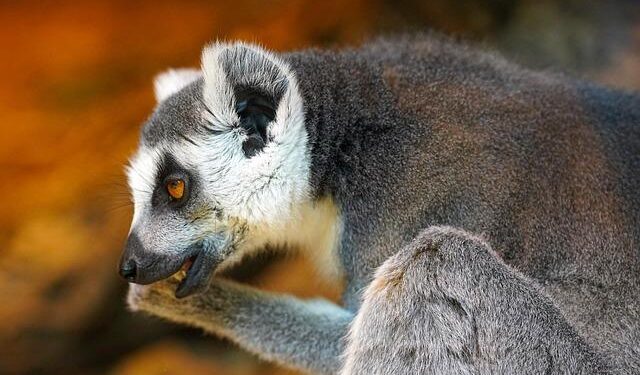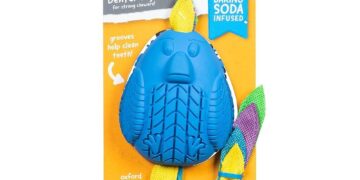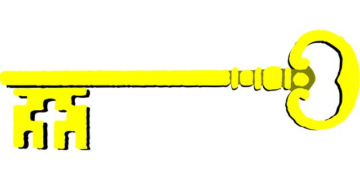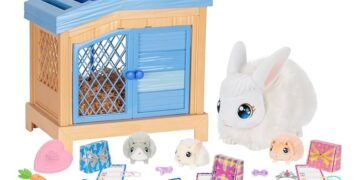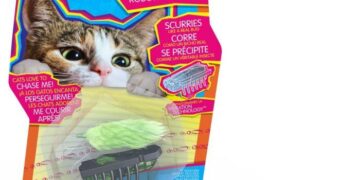Table of Contents
The $200 Mistake That Broke My Heart (and Almost My Cat)
I remember the day I brought Leo home.
He was a whirlwind of kitten energy wrapped in a sleek black coat, a rescue with eyes that held a universe of mischief.
I was determined, with the fierce conviction of a new parent, to give him the absolute best of everything.
My first major mission: find the perfect cat tree.
I dove into the internet with the zeal of a scholar.
I read blog posts, scrolled through endless product pages, and compared star ratings.
The conventional wisdom seemed clear: tall was good, more features were better.
I settled on a popular model, a towering beige monolith that promised a feline paradise.
It had multiple perches, two little condos, a ramp, a hammock, and even some dangling puffball toys.
The pictures looked great, and the reviews were glowing.
At just under $200, it felt like a responsible investment in my new best friend’s happiness.
The reality arrived in a heavy, awkward box that smelled faintly of chemicals and glue.1
The assembly was my first sign of trouble.
The instructions were a masterpiece of minimalist confusion, and the materials felt alarmingly flimsy.
The “wood” was particle board that flaked at the edges, and the plush carpeting felt thin and synthetic.1
It was a total pain in the ass to put together, and when I finally tightened the last bolt, the finished product stood before me, wobbly and S.D.
It was an architectural disaster.
The moment Leo, all of six pounds at the time, made his first tentative leap onto the lowest platform, the entire structure swayed like a skyscraper in an earthquake.1
He scrambled up, his claws finding little purchase on the velvety fabric that was meant for lounging, not scratching.1
He sniffed at the tiny condo, too small for him to comfortably turn around in, and ignored the ridiculously steep ladder that no self-respecting cat would ever use.1
The perches were so narrow he couldn’t even loaf properly, let alone stretch O.T.1
The dangling balls were summarily executed and torn from their strings within 24 hours.4
The tree was a failure.
But the heartbreak came a week later.
In a burst of kitten confidence, Leo took a running leap toward the top perch.
The tower wobbled so violently that he lost his footing, scrabbling wildly before tumbling down and landing with a panicked thud.
He shot under the sofa and refused to come out for an hour.
He never went near the tree again.
That $200 “feline paradise” became a monument to my failure.
It was an ugly, beige-and-brown eyesore that took up a massive corner of my living room, gathering dust and cat-free contempt.1
It was a constant, glaring reminder that despite my best intentions, I had not only wasted my money but had also failed to understand my cat on the most fundamental level.
I had provided him with something that was not just unappealing, but actively frightening.
I had followed all the rules, and I had gotten it completely, dangerously wrong.
The Architect’s Epiphany: Why We’ve Been Building Cat Trees All Wrong
My frustration with what I now call the “cat tree industrial complex” sent me down a different kind of rabbit hole.
I stopped looking at pet products and started reading about people.
I devoured books on architectural psychology, environmental design, and the concepts of “prospect and refuge”—the innate human desire to see without being seen.
I learned how thoughtful architecture isn’t just about shelter; it’s about creating spaces that support our deep-seated psychological needs for security, comfort, control, and purpose.5
A well-designed home makes us feel safe, empowered, and at ease.
And then it hit me with the force of a revelation.
I had bought a product, not a piece of architecture.
I had checked off a list of features—perches, condos, toys—without a single thought for the psychological purpose they were meant to serve for the creature using them.
We would never build a human house with shaky foundations, hallways too narrow to walk through, or windows that looked out onto a blank wall.
Yet, that is exactly what I had bought for Leo.
This was the epiphany: We have been thinking about cat trees all wrong.
They are not toys.
They are not accessories.
They are critical pieces of domestic infrastructure.
They are, or should be, an exercise in Feline Environmental Architecture.
This framework shifts the entire conversation.
It demands that we stop asking, “What features does it have?” and start asking, “What psychological and instinctual needs does this design serve?” It forces us to see the world from a cat’s perspective—as a creature that is both a predator and prey, driven by instincts for climbing, scratching, hiding, and surveying its territory.3
When you adopt this architectural mindset, the flaws in 90% of the cat trees on the market become painfully obvious.
They are not designed for cats; they are designed to be sold to humans who don’t know any better.
It was time to become a better architect.
The Five Pillars of Feline Environmental Architecture
To move from a vague idea to a practical tool, I broke down Feline Environmental Architecture into five core pillars.
These are the foundational principles that separate a mere product from a truly successful piece of feline design.
They are the blueprint for choosing a structure that will not just fill a corner of your room, but will genuinely enrich your cat’s world.
Pillar I: The Foundation of Security (Stability & Safety)
The Core Principle: A cat tree’s absolute, non-negotiable primary function is to provide a sense of security.
If a cat does not feel safe on it, every other feature is irrelevant.
This is the bedrock upon which all other pillars are built.
A cat’s world is governed by the delicate balance of being both predator and prey.
Their instincts are finely tuned to assess risk, and an unstable perch high off the ground screams “DANGER!”.3
This is why the most common complaint from cat owners is about wobbly, flimsy trees.1
A cat who feels a structure sway beneath them will not use it, because their survival instincts tell them it’s an unreliable, unsafe vantage point.1
This isn’t a preference; it’s a hardwired biological reality.
True architectural security is built on three elements:
- A Solid Base: Stability starts from the ground up. Look for a wide, heavy base that provides a low center of gravity. This is especially crucial for taller trees or those intended for large or multiple cats.10
- Quality Construction Materials: The difference between a safe structure and a hazardous one often lies in the materials. Solid wood is the gold standard, offering weight and durability.12 High-quality, heavy-duty engineered wood or plywood can also be excellent. Avoid cheap, lightweight particle board, which is prone to wobbling, breaking, and giving off chemical odors that can be harmful or off-putting to a cat’s sensitive nose.1
- Essential Safety Hardware: For any cat tree that is tall or houses energetic cats, an anti-tip kit that allows you to anchor the structure to a wall is not a “bonus feature”—it is a mandatory safety requirement.11
Furthermore, safety extends to the unseen.
The risk of bringing fleas, bacteria, or the scent of an unknown cat into your home makes buying used cat trees a significant gamble.18
A cat’s sense of smell is critical to their feeling of security, and the lingering scent of another animal can cause stress and rejection of the object.3
Security, therefore, is as much about a clean slate as it is about a steady base.
Pillar II: The Vertical Kingdom (Territory & Confidence)
The Core Principle: For a cat, height is currency.
It represents territory, status, and control.
A well-designed cat tree is a vertical expansion of your home, effectively increasing your cat’s domain and, with it, their confidence.
Veterinarians and cat behavior consultants consistently state that vertical space is “imperative” for feline well-being.3
From an elevated perch, a cat can survey their environment, watch for potential threats (like the vacuum cleaner or a boisterous toddler), and feel secure.9
In multi-cat households, vertical territory is a crucial tool for conflict avoidance, allowing cats to share a room while maintaining their personal space.3
Architecting a successful vertical kingdom involves more than just height:
- Intelligently Designed Perches: The platforms are not just steps; they are destinations. They must be large enough for a cat to comfortably turn around and lounge, not just perch precariously.1 For a large cat, a small perch is a design failure. Look for perches with raised rims or a scooped, hammock-like shape, which provide an extra sense of security and prevent a sleeping cat from rolling off.22
- Logical Navigation: The layout of the platforms is critical. A common flaw in cheap trees is stacking levels directly on top of one another, creating an awkward, difficult climb that Johnson aptly describes as being designed for squirrels, not cats.3 A good design features staggered platforms that create a clear, accessible “superhighway” for your cat to move up and down with confidence.10 This avoids creating dead ends or forcing terrifying, long jumps that can deter use or lead to injury, especially for less agile cats.1
- Prime Real Estate: The value of any architecture is determined by its location. A magnificent castle in the middle of a barren desert is useless. Similarly, a cat tree’s value is dictated by what can be observed from it. Countless owner anecdotes reveal that trees shoved into quiet back corners are ignored, while those placed in “socially significant” areas—especially near a window—become beloved hubs of activity.3 A window provides “cat TV”: a dynamic, ever-changing view of birds, squirrels, and neighborhood life that provides crucial mental stimulation for indoor cats.7 Therefore, a cat tree is a resource, and its architectural success is directly tied to the value of its location.
Pillar III: The Sanctuary of Self (Comfort & Retreat)
The Core Principle: Within the public structure of the tree, there must be private sanctuaries.
A successful cat tree provides spaces for secure, comfortable retreat where a cat can rest, de-stress, and feel completely safe.
Cats, even the most social ones, need solitude.
They require spaces where they can withdraw from the hustle and bustle of the household and feel unobserved.
This is the “refuge” aspect of the “prospect and refuge” dynamic that governs so much of their behavior.5
Architecting a proper sanctuary involves:
- Spacious and Secure Condos: Enclosed hideaways or “condos” are essential features for providing that sense of security.5 However, they must be designed for the cat’s actual size. A cat needs to be able to enter, turn around, and lie down comfortably.3 A cramped box is not a sanctuary; it’s a trap.
- The “Two-Exit” Rule: This is a critical design consideration, especially in multi-cat homes. A condo with only one entrance can become a point of conflict, where a more assertive cat can trap a more timid one inside, causing significant stress.29 Good feline architecture provides multiple escape routes, ensuring no cat ever feels cornered.
- Material Comfort and Hygiene: The materials used on lounging surfaces matter. Soft, plush fabrics, faux fleece, or deep carpeting provide a comfortable and inviting place to nap.10 Hammocks can be a favorite for some cats, but they must be made of durable material and be well-supported to feel secure.1 From a human perspective, hygiene is also key. Look for models with removable and machine-washable covers or cushions, which makes cleaning fur and dander much easier.14
This pillar also reveals a subtle but important design conflict: the contradiction of carpet.
Many trees are covered entirely in plush carpet for a uniform look.13
However, cat behaviorists warn against using carpet on scratching surfaces, as it can teach your cat that it’s okay to scratch your household carpets.3
The most sophisticated architecture resolves this conflict by using material differentiation to provide clear functional cues.
Plush, soft materials are reserved for lounging and sleeping surfaces, while distinct, scratch-appropriate materials like sisal are used for scratching posts.
This tells the cat: “This surface is for napping; that surface is for scratching.”
Pillar IV: The Arena of Instinct (Scratching & Play)
The Core Principle: A cat tree must provide sanctioned, deeply satisfying outlets for a cat’s hardwired, instinctual behaviors—primarily scratching and predatory play.
These behaviors are not “bad habits” to be broken; they are essential expressions of what it means to be a cat.
Scratching maintains claw health, stretches muscles, and serves as a powerful form of communication.15
Play hones predatory skills and provides vital physical and mental exercise.7
A cat tree that fails to accommodate these needs is failing at its job.
Designing a proper arena for instinct requires:
- Abundant and Appropriate Scratching Surfaces: This is non-negotiable.12 The preferred material for most cats is durable sisal rope or fabric, as its rough texture effectively mimics tree bark.3 The scratching posts must be tall enough to allow a cat to get a full-body stretch, which is a key part of the scratching behavior.28 A common flaw is providing only a small patch of sisal on a carpeted pole; look for posts that are fully and tightly wrapped from top to bottom.2
- Variety in Orientation: Just as they have preferences for texture, cats also have preferences for scratching angles. The best designs offer a variety of surfaces—vertical posts, horizontal pads, and inclined ramps—to cater to every cat’s individual style and allow for different types of muscle engagement.21
- Thoughtful Play Integration: Dangling toys can be a nice addition, but the flimsy puffballs on cheap trees are often destroyed in minutes and can even become a choking hazard.1 A better approach to play is interactive. A well-designed tree should have platforms and paths that are perfect for encouraging play with a wand toy, enticing your cat to leap and climb and engage with the structure itself.35
It’s crucial to understand that a scratching post is more than just a nail file.
It is a community bulletin board.
When a cat scratches, they leave both a visual mark (the shredded material) and an olfactory one from the scent glands in their paws.8
This is a declaration: “Leo was here.
This is my territory.” By placing a cat tree with good scratching posts in a socially significant area of the home, you are giving your cat a sanctioned place to “post their message,” reinforcing their sense of belonging and security.
Pillar V: The Integration of Worlds (Aesthetics & Harmony)
The Core Principle: The best Feline Environmental Architecture does not exist in a vacuum.
It integrates seamlessly into the human environment, creating a harmonious space that respects both the aesthetic needs of the owner and the behavioral needs of the cat.
For too long, cat furniture has been synonymous with ugly.
One of the most frequent and passionate complaints from owners is that standard cat trees are hideous monstrosities they feel obligated to own.1
This is not a trivial concern; it is a legitimate design failure that has real consequences for the cat’s well-being.
When an object is considered an eyesore, the natural human impulse is to hide it away—in a spare bedroom, a basement, or a forgotten corner.
As established in Pillar II, this placement in a low-value location dramatically reduces the tree’s utility and appeal to the cat.
It creates a vicious cycle: the ugly tree is hidden, the cat doesn’t use it, the owner feels the purchase was a waste, and the cat’s needs for vertical space and stimulation go unmet.
The solution lies in a new wave of modern, design-forward cat furniture.6
These pieces are conceived as stylish furniture that also happens to serve a cat’s needs.
They utilize materials like solid wood, bamboo, metal, and sleek fabrics, with clean lines that complement contemporary home decor.38
This creates a powerful positive behavioral loop:
- An owner invests in an aesthetically pleasing cat tree because it matches their home’s style.30
- Because it is attractive, they are proud to place it in a prominent, socially significant location, like the living room next to a sunny window.5
- This prime real estate is a high-value resource for the cat, offering observation, social inclusion, and mental stimulation.22
- The cat, in turn, uses the tree frequently and enthusiastically, fulfilling its instinctual needs for height, security, and scratching.
- The owner sees their beloved pet happily using this beautiful piece of furniture, which reinforces their positive feelings about the purchase, the cat, and their shared environment.
In this way, good human-centric design directly enables better feline welfare.
Harmony in the home is achieved not by hiding the cat’s world away, but by beautifully and thoughtfully integrating it with our own.
Architectural Blueprints: Designing for Your Cat’s Archetype
The Five Pillars provide the theory of good design.
Now, let’s put them into practice.
Just as a human architect designs different buildings for different needs—a library, a gym, a family home—we must design our feline architecture for the specific needs of our cat’s archetype.
Here are five blueprints to guide your selection.
Blueprint 1: The Maine Coon’s Fortress (For Large Cats: Maine Coons, Ragdolls, etc.)
For a large breed cat, a standard cat tree is like a human trying to live in a dollhouse.
The architecture must be scaled up in every dimension to be functional and safe.
- Pillar I (Security): This is the paramount concern. The fortress requires an extra-wide, heavy base and construction from solid wood or thick, high-grade engineered wood. Support posts should be substantial, ideally 4 inches or more in diameter, to prevent any flexing under weight.10 Look for products explicitly rated for cats over 25 pounds and equipped with anti-tip hardware.10
- Pillar II (Territory): Perches and platforms must be oversized. A 16-pound cat needs a generous surface to lounge on, not a tiny ledge to balance on.1 Look for deep, wide platforms that allow for a full-body stretch.
- Pillar III & IV (Sanctuary & Instinct): Condo openings must be large enough for easy entry and exit. Scratching posts must be tall and robust enough to handle the power of a large cat and allow for a full, satisfying stretch.
- Pillar V (Aesthetics): While “heavy-duty” often implies “bulky,” brands like Cat Tree King and certain premium FEANDREA models are proving that sturdy and stylish are not mutually exclusive.43
Blueprint 2: The Senior’s Gentle Ascent (For Senior or Mobility-Impaired Cats)
As cats age, their mobility can decrease due to conditions like arthritis.
Their desire for height and security remains, but their ability to leap diminishes.
The architecture must prioritize accessibility over altitude.
- Pillar II & III (Territory & Sanctuary): The defining feature of this blueprint is easy navigation. Forget towering heights; focus on broad, staggered levels that function more like stairs than a climbing wall.2 Ramps with good traction are an excellent feature. Platforms should be low-rise and generously sized to provide a stable landing and resting spot.17
- Pillar I (Security): Absolute stability is critical, as a senior cat is less able to recover from a slip or a wobble.
- Pillar IV (Instinct): Senior cats still need to scratch, but they may prefer horizontal or low-angled scratching surfaces that don’t require them to stand on their hind legs.3
- Pillar V (Aesthetics): Many senior-friendly designs can look overly functional or “medical.” However, brands are increasingly using plush, orthopedic-style padding and soft fabrics to create structures that are both comfortable and visually appealing.17
Blueprint 3: The Kitten’s Training Ground (For Kittens)
A kitten’s first cat tree is not just a playground; it’s a long-term investment in their behavioral development.
The architecture you choose now will shape their habits for years to come.
- Pillar IV (Instinct): This is a primary focus. The structure must be rich with appropriate scratching surfaces—sisal posts, cardboard pads—to immediately establish good scratching habits and redirect them away from your furniture.15
- Pillar I & II (Security & Territory): While kittens are light, they are also clumsy explorers. The tree must be fundamentally stable, as a scary fall can create a lasting negative association. The design should be one they can grow into, not a “kitten-sized” tree that will be too small and unstable in six months.1 Investing in a cheap, tiny tree is a false economy.
- Pillar III (Sanctuary): Safe, cozy hideaways are important for a kitten that is still adjusting to a new, big world. Engaging but safe, well-attached play elements are a plus.24
Blueprint 4: The Multi-Cat Dynasty’s Realm (For Multi-Cat Households)
In a home with multiple cats, the cat tree is not just furniture; it is a piece of social infrastructure designed to manage resources and mitigate conflict.
Its design can either foster a harmonious dynasty or create a constant battleground.
- Pillar II & III (Territory & Sanctuary): Resource management is the guiding principle. The architecture must provide multiple high-value perches, especially at the top, to prevent “king-of-the-hill” disputes.3 It needs an abundance of resting spots—condos, hammocks, platforms—so that each cat can find their own space. The “two-exit” rule for condos is absolutely essential to prevent trapping and bullying.29 Ideally, you should have one tree per cat, but a single, very large and thoughtfully designed structure can serve as a successful shared realm.3
- Pillar I (Security): The structure must be exceptionally sturdy to handle the combined weight and activity of several cats playing or chasing each other simultaneously.
Blueprint 5: The Urban Dweller’s Skyscraper (For Small Spaces)
In an apartment or small home where floor space is a precious commodity, the architecture must think vertically.
- Pillar II (Territory): The goal is to maximize the vertical kingdom with a minimal footprint. Tall, slender towers or floor-to-ceiling tension-pole trees are brilliant solutions, drawing the eye upward and giving the cat a vast territory to explore without cluttering the room.12
- Pillar I & V (Security & Aesthetics): This is where wall-mounted architecture truly excels. Systems of shelves, perches, and hammocks (like those from Catastrophic Creations) offer unparalleled stability because they are anchored directly to the wall studs.39 They take up zero floor space and can be arranged to create a custom “cat superhighway” that doubles as a unique piece of wall art. Brands like Tuft + Paw and The Refined Feline specialize in these beautiful, space-efficient solutions that look like intentional, high-end decor.38
The Architect’s Showcase: The Best Cat Tree Blueprints of 2024
Evaluating a cat tree through the lens of the Five Pillars requires a new kind of tool.
A simple pros-and-cons list is insufficient because it doesn’t weigh the importance of each feature from a behavioral perspective.
To that end, I’ve developed the Feline Environmental Architecture Scorecard.
This tool rates products on a scale of 1 to 5 across each of the Five Pillars, providing an at-a-glance measure of its architectural soundness.
A high score indicates a design that deeply understands and successfully provides for a cat’s core needs.
| Product Showcase & Scorecard |
| Feline Environmental Architecture Scorecard |
| Product |
| FEANDREA Multi-Level Cat Tree for Large Cats |
| Frisco 72-in Faux Fur Cat Tree & Condo |
| Tuft + Paw Frond Cat Tree |
| Feandrea Cat Tree for Seniors |
| Catastrophic Creations The Juggernaut |
Best Overall for Large Cats: FEANDREA Multi-Level Cat Tree for Large Cats
Architectural Analysis: This FEANDREA model is a masterclass in Pillar I (Security) for large cats.
Its design is fundamentally robust, starting with a wide, reinforced base and featuring thick, 3.4-inch support posts that provide exceptional stability.44
Video reviews and user testimonials confirm that it remains sturdy even when large cats leap onto it.48
The inclusion of an anti-tip kit for wall anchoring pushes its security score to the top.
For Pillar II (Territory), it earns high marks with its generously sized top perch and roomy condos, specifically designed to accommodate larger breeds like Maine Coons who need space to stretch O.T.11
It provides a wealth of scratching surfaces (Pillar IV), with 15 sisal-wrapped posts ensuring there’s always an appropriate outlet for claw maintenance.44
Its primary weakness is in Pillar V (Aesthetics); it’s a traditional, carpet-covered tower that prioritizes function over form.
However, for owners of large cats, its superior engineering and cat-centric design make it an outstanding piece of architecture.
Best for Multi-Cat Homes & Best Value: Frisco 72-in Faux Fur Cat Tree & Condo
Architectural Analysis: The genius of this ubiquitous Frisco model lies in its mastery of Pillar III (Sanctuary) for a multi-cat environment.
It is a vertical metropolis of resources.
With two condos, multiple perches at varying heights, and even a bottom-level hammock, it provides an abundance of spaces that allow multiple cats to coexist peacefully, minimizing competition for coveted spots.16
Critically for multi-cat dynamics, the condos feature multiple entry and exit points, adhering to the “two-exit” rule and preventing a cat from being trapped by a housemate.29
Its 72-inch height offers a fantastic vertical territory (Pillar II), and numerous reviews from owners of three, four, or even seven cats attest to its ability to handle a crowd.16
While its particle board construction keeps it from the top tier of Pillar I (Security), it is widely regarded as sturdy for its price point, especially when placed against a wall.
Its biggest trade-off is in Pillar V (Aesthetics), as it is the quintessential beige carpeted tree.
Yet, for its price, there is arguably no better piece of social infrastructure for a thriving multi-cat dynasty.
Best for Aesthetics & Small Spaces: Tuft + Paw Frond Cat Tree
Architectural Analysis: The Frond is a stunning example of Pillar V (Aesthetics) executed to perfection.
It rejects the carpeted monolith in favor of a sleek, minimalist design that uses high-end materials like birch plywood and ash veneer.40
It is designed to be a beautiful piece of furniture that integrates into a modern home, not an item to be hidden.
This aesthetic excellence directly serves feline well-being by encouraging owners to place it in a prominent, high-value location.
For small spaces, its slim profile is a major advantage, maximizing vertical territory (Pillar II) without consuming precious floor space.
The central column is fully wrapped in durable sisal rope, providing an excellent, continuous scratching surface (Pillar IV).
Its main architectural trade-offs are in Pillar III (Sanctuary)—it lacks enclosed condos and its platforms are unpadded—and its platforms may be too small for very large cats.
It is a premium choice for the design-conscious owner in an urban environment.
Best for Senior Cats: Feandrea Cat Tree for Seniors
Architectural Analysis: This Feandrea model is a triumph of empathetic design, scoring a perfect 5/5 in Pillar II (Territory) for its target user.
It understands that senior cats still crave the psychological benefits of height but may lack the mobility for it.
Its low 33-inch profile, combined with a ramp-like multi-level design, provides a “gentle ascent” to a secure vantage point.17
The platforms are broad and staggered for easy, safe navigation.
Pillar III (Sanctuary) is also exceptionally well-served by an oversized, well-padded top perch with a cushioned rim, creating a perfect, secure napping spot for an older cat with achy joints.17
The entire structure is wrapped in plush, soft material, prioritizing comfort.
It’s a thoughtful, compassionate piece of architecture that respects the changing needs of a beloved, aging companion.
Best for Ultimate Customization & Small Spaces: Catastrophic Creations The Juggernaut
Architectural Analysis: This isn’t a cat tree; it’s a modular, wall-mounted architectural system.
It achieves a near-perfect score by allowing the owner to become the architect.
Pillar I (Security) is unmatched; because the components are mounted directly into wall studs, they are supremely stable.39
Pillar II (Territory) is limited only by your wall space and imagination, allowing you to create a complex “cat superhighway” across an entire room, which is the ultimate solution for small apartments with no floor space to spare.
You can integrate scratching posts, hammocks, hideaways, and feeding stations, allowing for perfect customization of Pillars III and IV.
Finally, Pillar V (Aesthetics) is a huge win; the combination of natural bamboo, sturdy canvas, and sisal creates a modern, artistic installation on your wall.39
The only downside is the need for confident DIY skills for installation.
For the dedicated cat owner, this system represents the pinnacle of bespoke Feline Environmental Architecture.
Conclusion: You’re Not Buying a Cat Tree, You’re Building a Home
After my initial, disastrous $200 mistake, I threw out the old rules and embraced the principles of Feline Environmental Architecture.
I stopped looking for the most features and started searching for the best design.
For Leo, a young, athletic, and confident cat, I chose a structure that scored high on all five pillars.
It was made of solid wood, with a wide, heavy base that didn’t budge (Pillar I).
It was tall, with broad, staggered perches that led to a commanding view of the living room and the bird feeder outside the window (Pillar II & V).
It had a spacious, two-exit condo lined with soft fleece (Pillar III).
And its support posts were thick, sturdy, and wrapped entirely in durable sisal rope (Pillar IV).
The change was immediate and profound.
Leo didn’t just use the new tree; he inhabited it.
It became the central hub of his world.
He spends his mornings surveying his kingdom from the top perch, his afternoons napping securely in the condo, and his evenings launching mock-ferocious attacks on the sisal posts.
He is more confident, more relaxed, and more expressive of his natural “cat-ness” than ever before.
The experience taught me a powerful lesson.
A cat tree is one of the most significant investments you can make in your cat’s physical health and psychological well-being.7
It is their castle, their lookout tower, their gym, and their safe haven, all in one.
To choose one thoughtlessly is to misunderstand the very nature of the creature you share your life with.
So, I urge you to throw out the old checklists.
Stop counting the dangling toys and start evaluating the architecture.
Look at your space not with your eyes, but with theirs.
You are the architect of your cat’s world.
Build them a home worthy of the boundless joy they bring to yours.
Works cited
- Cat Trees 101 : r/CatAdvice – Reddit, accessed August 11, 2025, https://www.reddit.com/r/CatAdvice/comments/nxnjsr/cat_trees_101/
- r/CatTrees – Reddit, accessed August 11, 2025, https://www.reddit.com/r/CatTrees/
- How to Choose a Cat Tree Your Cat Will Love, accessed August 11, 2025, https://moderncat.com/articles/expert-tips-to-help-you-find-the-right-cat-tree/
- The 10 Best Cat Trees, Tested and Reviewed – The Spruce Pets, accessed August 11, 2025, https://www.thesprucepets.com/best-cat-trees-4159408
- Create the Purrfect Cat-Friendly Home Environment – ERGO PURRCH, accessed August 11, 2025, https://ergopurrch.com/blogs/cats/create-the-purrfect-cat-friendly-home-environment
- Designing a Cat-Friendly Home Without Sacrificing Style – The Refined Feline, accessed August 11, 2025, https://www.therefinedfeline.com/designing-a-cat-friendly-home-without-sacrificing-style/
- Why Cats Need Cat Trees: A Behavioral Perspective – Kbspets, accessed August 11, 2025, https://kbspets.com/blogs/news/why-cats-need-cat-trees-a-behavioral-perspective
- Five Pillars of Healthy Feline Environmental Enrichment, accessed August 11, 2025, https://www.thedrakecenter.com/services/blog/five-pillars-healthy-feline-environmental-enrichment
- Environmental Enrichment for Indoor Cats – PMC, accessed August 11, 2025, https://pmc.ncbi.nlm.nih.gov/articles/PMC3922041/
- How To Choose A Quality Cat Tree For Large Cats? – Kbspets, accessed August 11, 2025, https://kbspets.com/blogs/news/how-to-choose-a-quality-cat-tree-for-large-cats
- Best Cat Tree for Large Cats: Top 5 Picks, Features & Buying Tips …, accessed August 11, 2025, https://www.holistapet.com/blogs/pet-accessories/best-cat-tree-for-large-cats
- What Kind of Cat Trees Do Cats Prefer? – mewcats, accessed August 11, 2025, https://www.mewcats.com/blogs/blog/what-kind-of-cat-trees-do-cats-prefer
- Large Cat Trees | New Cat Condos, accessed August 11, 2025, https://www.newcatcondos.com/large-cat-trees/
- Your Guide to Buying a Quality Cat Tree: The Cat Case, the Ultimate Solution, accessed August 11, 2025, https://www.catmatter.com/blogs/blog/your-guide-to-buying-a-quality-cat-tree-the-cat-case-the-ultimate-solution
- Are cat trees actually good for cats? : r/CatAdvice – Reddit, accessed August 11, 2025, https://www.reddit.com/r/CatAdvice/comments/15348bj/are_cat_trees_actually_good_for_cats/
- The 8 Best Cat Trees: We Tested Them All: Unbiased Review – Cats.com, accessed August 11, 2025, https://cats.com/reviews/best-cat-trees
- Our Favorite Cat Tree For Senior Cats Has The Ultimate Napping Perch – The Spruce Pets, accessed August 11, 2025, https://www.thesprucepets.com/best-cat-trees-for-senior-cats-7692873
- Any experience buying a used cat tree? : r/mainecoons – Reddit, accessed August 11, 2025, https://www.reddit.com/r/mainecoons/comments/18bxr4w/any_experience_buying_a_used_cat_tree/
- I just bought a used cat tree : r/CatAdvice – Reddit, accessed August 11, 2025, https://www.reddit.com/r/CatAdvice/comments/lpra14/i_just_bought_a_used_cat_tree/
- Beyond the Cat Tree: Feline Enrichment for the New Behavior Consultant – IAABC Journal, accessed August 11, 2025, https://journal.iaabcfoundation.org/beyond-the-cat-tree-feline-enrichment-for-the-new-behavior-consultant/
- Purrfectly Entertained: Indoor Enrichment for Cats – AAHA, accessed August 11, 2025, https://www.aaha.org/resources/purrfectly-entertained-indoor-enrichment-for-cats/
- How to Create the Ultimate Vertical Space for Your Feline Friend: Tips and Ideas – Cat Advocate, accessed August 11, 2025, https://www.cat-advocate.com/post/2019/10/18/vertical-space-for-cats
- Looking for a good cat tree for my senior cat : r/CatAdvice – Reddit, accessed August 11, 2025, https://www.reddit.com/r/CatAdvice/comments/1jm936r/looking_for_a_good_cat_tree_for_my_senior_cat/
- Tips When Choosing Cat Trees for Your Kittens – tangkula, accessed August 11, 2025, https://www.tangkula.com/blogs/buying-guides/tips-when-choosing-cat-trees-for-your-kittens
- cat doesn’t want to use cat tree 🙁 : r/CatAdvice – Reddit, accessed August 11, 2025, https://www.reddit.com/r/CatAdvice/comments/18rqzep/cat_doesnt_want_to_use_cat_tree/
- 5 Quick Tips On How To Introduce A Cat To New Cat Furniture – Class Act Cats, accessed August 11, 2025, https://classactcats.com/blog/how-to-introduce-a-cat-to-new-cat-furniture/
- Environmental Enrichment for Cats | Oak Tree Veterinary Hospital, accessed August 11, 2025, https://www.oaktreevet.net/environmental-enrichment-cats/
- Simple Tips to Make Your Room a Cat-Friendly Haven – Julie Ann Rachelle Interiors LLC, accessed August 11, 2025, https://www.julieannrachelle.com/blended-decor-blog/simple-tips-to-make-a-cat-friendly-haven
- Yes, Your Kitty Needs a Cat Tree – Here’s How to Choose the Best One – Chewy, accessed August 11, 2025, https://www.chewy.com/education/cat/general/yes-your-kitty-needs-a-cat-tree-heres-how-to-choose-the-best-one
- Feandrea Cat Tree By Songmics Home Review – Thrifty Nifty Mommy, accessed August 11, 2025, https://thriftyniftymommy.com/feandrea-cat-tree-by-songmics-home/
- Frisco Cat Tree & Condo Review (2025 Update) – Catster, accessed August 11, 2025, https://www.catster.com/lifestyle/frisco-cat-tree-review/
- Cat Trees For Senior Cats | Wayfair, accessed August 11, 2025, https://www.wayfair.com/keyword.php?keyword=cat+trees+for+senior+cats
- 20 FAQs about Indoor Cat Trees You Want To Know – Tangkula, accessed August 11, 2025, https://www.tangkula.com/blogs/faq/cat-trees
- New kitten owner – do I really need a cat tree? : r/CatAdvice – Reddit, accessed August 11, 2025, https://www.reddit.com/r/CatAdvice/comments/1bphyff/new_kitten_owner_do_i_really_need_a_cat_tree/
- Teach Your Cat to Use the New Cat Tree – OutdoorBengal, accessed August 11, 2025, https://www.outdoorbengal.com/blogs/cat-advice/teach-your-cat-to-use-the-new-cat-tree
- How to Introduce Your Cat to a Cat Tree: 7 Tips and Tricks – The Comforted Kitty, accessed August 11, 2025, https://comfortedkitty.com/introducing-your-cat-to-a-cat-tree-7-tips-tricks/
- Creating a Cat-Friendly Home: Essential Design Tips from Furrther, accessed August 11, 2025, https://www.furrther.com/blogs/blogs/cat-friendly-home-design-tips
- Modern Cat Trees, Towers & Condos – The Refined Feline, accessed August 11, 2025, https://www.therefinedfeline.com/modern-cat-trees-towers/
- Cat Trees for Large Cats – Catastrophic Creations, accessed August 11, 2025, https://www.catastrophicreations.com/collections/large-cat-trees
- 5 Best Cat Trees for Apartments and Small Spaces in 2024 – tuft + paw, accessed August 11, 2025, https://www.tuftandpaw.com/blogs/cat-guides/best-cat-trees-for-apartments-small-spaces
- 10 Best Cat Trees of 2024 (so far) – Tuft + Paw, accessed August 11, 2025, https://www.tuftandpaw.com/blogs/modern-cat-blog/best-cat-trees
- How to Make Your House Cat-Friendly and Still Design-Forward | The Inspired Home, accessed August 11, 2025, https://theinspiredhome.com/articles/how-to-make-your-house-cat-friendly-and-still-design-forward/
- Cat Tree King: Cat Trees | Cat Towers & Tree Houses, accessed August 11, 2025, https://cattreeking.com/
- The Best Cat Trees for Large Cats (For Every Use), accessed August 11, 2025, https://puppygrowthcalculator.com/best-cat-trees-for-large-cats/
- Cat Trees for Senior – A Luxurious Necessity – Songmics, accessed August 11, 2025, https://www.songmics.com/blogs/pet-caring-tips-guides/cat-trees-for-senior-cats-a-luxurious-necessity
- How to Choose the Perfect Cat Tree for Your Feline’s Activity Level, accessed August 11, 2025, https://www.therefinedfeline.com/how-to-choose-the-perfect-cat-tree-for-your-felines-activity-level/
- How to Choose a Cat Tree – WebMD, accessed August 11, 2025, https://www.webmd.com/pets/cats/how-to-choose-a-cat-tree
- Feandrea Cat Tree Review – YouTube, accessed August 11, 2025, https://www.youtube.com/watch?v=ZdwN5C0BQuk
- Feandrea Cat Tree Review – Is It Worth It? – YouTube, accessed August 11, 2025, https://www.youtube.com/watch?v=vD__SBG7mlA
- Cat Condo and Cat Tree Reviews | The Catnip Times, accessed August 11, 2025, https://www.thecatniptimes.com/ratings-and-reviews/cat-condo-and-cat-tree-reviews/
- Environmental enrichment for indoor cats – catvets.com, accessed August 11, 2025, https://catvets.com/wp-content/uploads/2024/08/2011-Enviromental-Enhancement-Position-Statement.pdf
